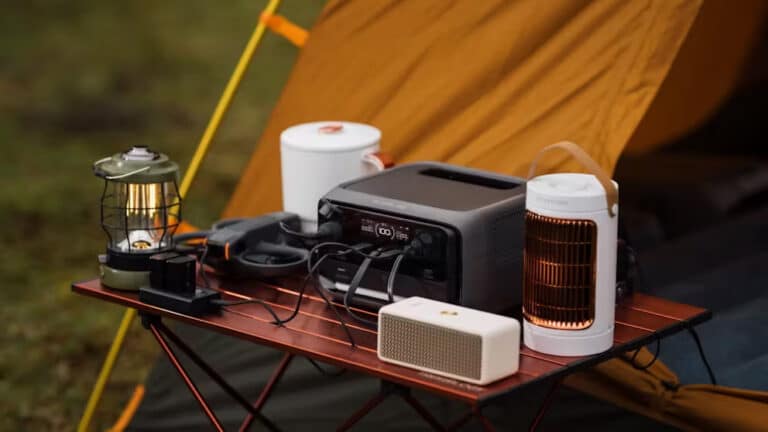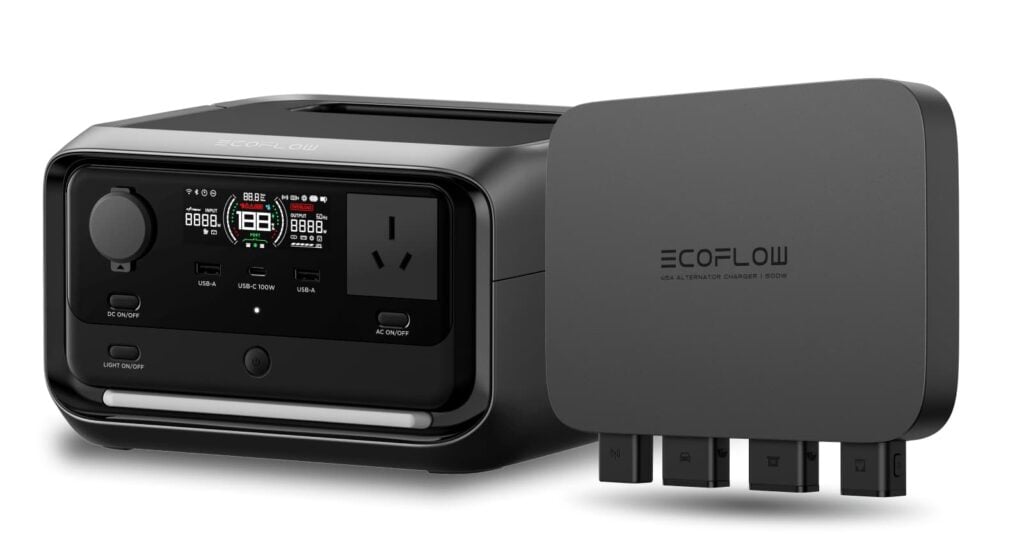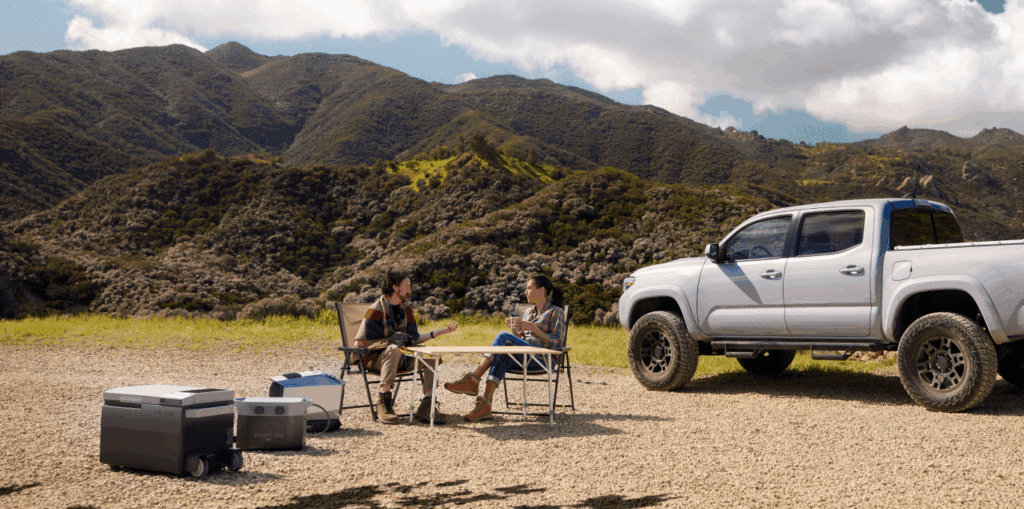Everything you need to know about buying a portable power station




Picture this. You’ve set up camp in the middle of the Simpson Desert. It’s hot, but you’ve got a cold beer in hand, the Starlink beaming the footy onto your iPad and a portable fan blasting the sweat from your brow. Who says camping comes with sacrifice? When you have a portable power station, you can keep your fridge and devices charged wherever and whenever you choose to roam. But what do you need to consider before making your purchase?
Firstly, let’s explain what a portable power station is, how it works and the benefits. Think of a portable power station like the high-tech version of an old-school diesel generator, except it’s smaller, lighter, quieter, much more portable and doesn’t run on liquid fuel. It’s an all-in-one battery-powered electricity source with a built-in inverter that can power appliances and devices on AC (240V) and DC (12V) power.
Power stations, like the EcoFlow RIVER 3 Plus, can be charged from a traditional 240V power socket, from solar or through an in-vehicle alternator charger – like the EcoFlow 500W Alternator Charger. The main benefit of this type of charge station compared with a fixed car-mounted dual battery system, is it’s supremely mobile and versatile. The unit can go wherever you go – whether that be to the beach, boating, the Birdsville Track or a backyard barbecue.

A power station’s sole purpose is to power your gear. So, to work out which unit is right for you, you need to understand your power needs. What do you want to charge, how often and for how long? Are your appliances energy hungry and will you be running multiple devices simultaneously? Once you’ve identified your needs, think about how they translate to electricity consumption. For this, it’s time to read the fine print on your electricals and get out the calculator. Look at the total wattage of your appliances and devices to see how much energy they draw and multiply this by your anticipated run time. For a fridge, this will be continuous, but for a portable induction cooktop or mobile phone, the power draw is only intermittent.

Now that you know your expected power consumption, you can measure this against the station’s battery capacity, expressed in watt hours (Wh), and power output (wattage). Look at both the power station’s continuous wattage (the amount of electricity continuously discharged) and its peak wattage (maximum power output for short bursts). Make sure you give yourself a buffer by choosing a unit that has more power than you anticipate needing so you don’t run short.
For example, the new EcoFlow RIVER 3 Plus has a 286Wh capacity with a 600W output. That’s enough to run a 60W car fridge for more than 3.5 hours, from a compact ‘starter’ unit that weighs less than 5kg. Need more power? The series’ top tier power station (the EcoFlow RIVER 3 Max Plus) will run the same fridge for almost 11 hours, but it comes at the expense of extra bulk and weight – 10.8kg in total.
Weight brings us to the next consideration – portability. Do you value portability over power, or does maximum output trump minimum size? To determine your priorities, think about how you will use your power station. Is it something you’d like to carry on day outings to the beach or in a tinny to keep drinks cold and maybe charge a phone? Or are you camping off-grid and need a beast of a unit that will cool, cook and charge for a couple of days in situ? The more power you need, the bigger and heavier your portable power station will be, but that’s okay if it’s fit for purpose. You just need to be clear on your purpose.
Now that you know roughly what you need to power and where, you’ll probably have some idea of the ports and plugs you require. Most of the more sophisticated power stations with built-in inverters will have AC (240V) sockets and DC (12V) USB and USB-C ports for charging devices like phones and tablets, and maybe even a 12V cigarette lighter socket. Think about the number and distribution of plugs. If most of your appliances need a traditional three-pin (240V) socket, and you will be running multiple appliances/devices at once, make sure you have enough charge points.

The EcoFlow DELTA 3 Plus is a top-of-the-range power station with four three-pin sockets and two USB and USB-C (fast-charge) ports and packs a whopping 1800W output (1024Wh capacity) that will power 99 per cent of home appliances. Of course, this 12.5kg unit is overkill if you are camping in a tent and just want to power a lantern and keep your phone juiced. Instead consider the RIVER 3 which weighs in at only 3.5kgs, has a 300W output, with one AC socket, two USB-A ports, one USB-C port, and a 12V socket.
A portable power station is only as useful as its charge. You need to consider how you are going to recharge the battery on your unit, especially if you plan to be off-grid for an extended period and using a lot of power. In this case, you will need to make sure your station has the capability to be charged from solar and/or from a vehicle battery while you are driving. Alternator chargers like the EcoFlow 800W Alternator Charger charge eight times faster than traditional vehicle auxiliary outlets and are an efficient way of topping up your power station on the road.

Portable power stations aren’t cheap, so you’ll want to ensure yours will keep your gear charged for years to come. When assessing a unit’s power and output, consider the lifespan of the battery. Quality batteries should last about 10 years or 3000 charging cycles. Also check the durability of the power station to resist heat, water, bumps and falls. Lastly, is it safe? There are plenty of cheap brands on the market, but do they have short-circuit and overcharge protection and temperature control?
Once you’ve decided on your perfect power station and bundled it into the car for a weekend away, stop and think. Do you have all the appliances you need? As clever as today’s power stations are, they can’t pack the fridge for you.